Do you want to enhance your backyard with the addition of Aloe Vera plants? This weird-looking succulent is often found in gardens for the many benefits it can add, from enhancing the appearance of an environment with its unique foliage to providing topical treatments like sunburn relief and even skin care products. But before you go ahead and purchase some aloe vera plants, there are certain considerations that need to be made. In this blog we’ll explore the various environmental conditions necessary for successfully growing aloe vera outdoors and discuss how best to look after it so that your garden will be blessed with beautiful green leaves in no time!
Aloe Vera
Aloe Vera, a humble green plant with a rich history and multitude of uses, can be a wonderful addition to your garden or backyard. Its spiky, green leaves contain a gel-like substance that has been celebrated for centuries for its healing properties. Let’s delve into some key considerations and steps for growing this amazing plant outdoors successfully.
Characteristics & Types
Originating from the Arabian Peninsula, Aloe Vera has since spread globally, acclimating to various climates and conditions. [1] This perennial succulent is known for its thick, fleshy green leaves that fan out from its central stem. The leaves are edged with small, white teeth and when broken, release a clear gel renowned for its healing properties.
There are more than 500 species of Aloe, each with their unique characteristics and features. However, the most commonly known and cultivated is Aloe Vera (Aloe Barbadensis Miller). This particular species is recognized for its high gel contents and is frequently used in cosmetics and health products.
Aloe Ferox, or the Cape Aloe, is another significant species. Native to South Africa, this plant is known for its tall, single-stemmed base and striking red flowers. However, it’s the hard, brown resin collected from the leaves, known as Cape Aloe, that is prized for its medicinal properties.
Overall, the variety of Aloe species offers a wide range of possibilities for gardeners, both in terms of their visual appeal and their practical uses.
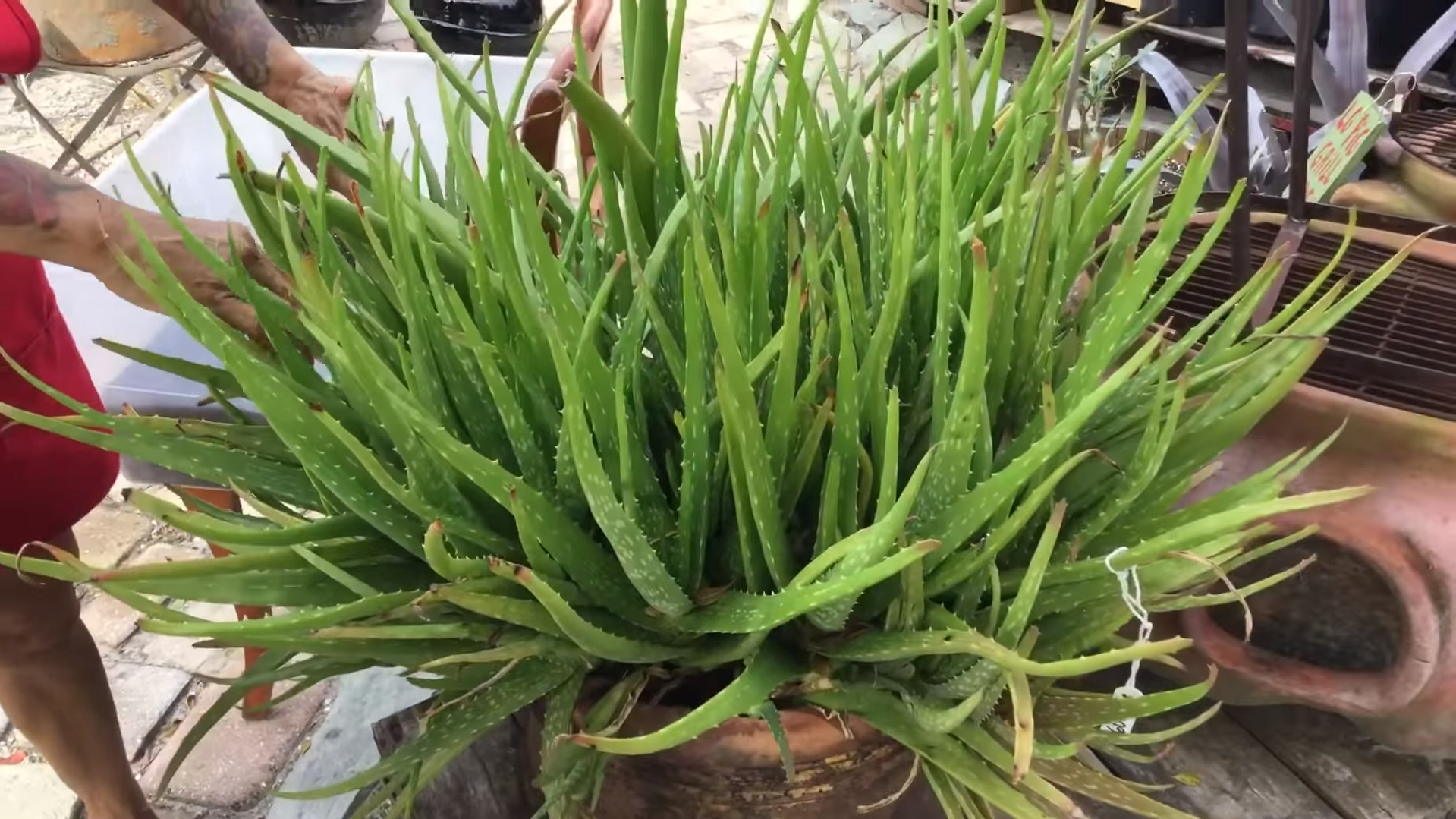
Popularity of Aloe Vera as an outside decoration
Aloe Vera’s popularity as an outdoor decoration isn’t accidental. It owes its widespread appeal to a combination of aesthetic, practical, and therapeutic attributes. From an aesthetic viewpoint, Aloe Vera’s unique and striking appearance, with its thick, fleshy leaves and dramatic floral spikes, makes it a standout in any landscape. The plant’s capacity to flourish in different climates and soil types, while needing little water and care, appeals to both inexperienced gardeners and individuals residing in regions plagued by water scarcity.
On the practical side, the plant’s resilience to pests and its ability to improve soil quality by fixing nitrogen makes it a natural choice for organic gardening. From a therapeutic perspective, the healing properties of the aloe gel, which can be used for treating minor burns and skin irritations, add an extra dimension of utility to this already versatile plant. It’s no wonder then that Aloe Vera continues to enjoy pride of place in gardens across the globe.
Considerations Before Planting Aloe Vera Outside
Before planting Aloe Vera outside, there are several key considerations to keep in mind. The first and most important one is selecting the right location. Aloe Vera thrives in a spot with plenty of sunlight, preferably six to eight hours a day. If you live in a colder climate, it’s important to ensure the plant is protected from frost and freezing temperatures as Aloe Vera is sensitive to cold weather.
The second consideration is soil type. Aloe Vera prefers well-draining soil. A sandy or gravelly mix is often the best choice as it can help prevent waterlogging and subsequent root rot. If your garden has heavy clay or loamy soil, consider improving drainage by adding coarse sand, perlite, or pumice to the mix.
The third consideration relates to watering. Aloe Vera is a succulent and is adapted to dry conditions. That means it’s better to underwater rather than over water the plant. Make sure to wait for the soil to be completely dry before watering it again. Too much water can lead to root rot, which is the most common problem encountered when growing Aloe Vera.
Lastly, keep an eye out for pests and diseases. While Aloe Vera is generally pest-resistant, it can occasionally be affected by common pests like aphids, scale, and mealybugs. If detected early, these pests can be controlled with the help of organic pesticides or beneficial insects like ladybugs. Regularly inspecting your plant can help promptly identify and address any issues before they become a serious problem.
Steps to Successfully Plant Aloe Vera Outside
In this section, we’ll walk you through the steps to successfully plant and care for Aloe outdoors, ensuring your garden is graced with this unique and beneficial plant. By following this guide, anyone can become a proficient Aloe Vera gardener, regardless of their prior gardening experience. Let’s dive into the process.
Transplantation Timing
Timing is a crucial factor when it comes to transplanting Aloe. The plant should ideally be transplanted during the warmer months of the year, generally between spring and summer. This period is beneficial for Aloe Vera as the higher temperatures and increased sunlight hours provide optimum conditions for the plant to establish itself and grow. [2] Transplanting during this time allows Aloe Vera to take advantage of the warm weather to recover from the stress of transplantation and begin new growth.
Conversely, transplanting during the colder months or in the middle of winter should be avoided as the lower temperatures can cause the plant to enter a dormant state, slowing down its growth and recovery. Likewise, moving the plant in autumn might not provide sufficient opportunity for it to establish roots before winter arrives. Therefore, to give your Aloe Vera the best chance of survival and growth, carefully considering the timing of transplantation is of paramount importance.
Site Selection
Selecting the appropriate site to plant Aloe is a significant step in ensuring its growth and longevity. As previously mentioned, Aloe Vera thrives in full sunlight, so pick a spot that gets at least six to eight hours of sunlight each day. Avoid areas that are shaded or receive minimal sunlight. If you live in an area that experiences hot, intense noonday sun, a location that offers some shelter from the afternoon sun may be beneficial to prevent leaf scorch.
A suitable location should also possess good drainage since Aloe is unable to tolerate stagnant water. If the site is prone to water logging, consider creating a raised bed or mound to improve drainage. Additionally, consider the space around the site. Aloe Vera plants can spread and need room to grow.
Finally, while Aloe can tolerate poor soil, it grows best in well-draining, sandy, or gravelly soil. If your garden soil does not fit this description, consider amending it with coarse sand, perlite, or pumice to improve its texture and drainage.
In conclusion, the ideal site for planting Aloe should be sunny, well-draining, spacious, and filled with sandy or gravelly soil. It’s worth taking the time to carefully select the site, as the right location will set the foundation for a healthy and thriving Aloe Vera plant.

Soil Preparation
Adequate soil preparation is a key determinant of the success of your plant. The type of soil you choose impacts not only the health and growth of the plant but also its ability to resist pests and diseases.
When choosing soil, look for a sand or gravel-based mix that is specifically formulated for succulents or cacti. If you’re preparing your own mix, you can create a suitable environment by combining coarse sand, perlite, or pumice with some organic matter.
The pH level of the soil is also important. The Aloe plant thrives best in soil with a pH range of 6 to 8, which should be slightly acidic to neutral. [3] You can determine the soil pH by utilizing a soil pH tester, easily found at garden centers or through online sources.
Transplantation and Growing Technique
Transplanting Aloe Vera requires a careful approach to ensure the plant’s survival and growth. Gently remove the plant from its container, being cautious not to damage its root system. Inspect the roots for any signs of rot or damage, and trim off any affected areas if necessary.
Next, prepare a hole in the pre-prepared soil at your chosen site. The hole should be deep and wide enough to comfortably accommodate the root ball of the plant. To plant the Aloe, place it in the hole so that the base of the plant is level with or slightly above the surrounding soil. Fill it with the remaining soil, gently pressing it down to secure the plant’s base.
Then, water the plant thoroughly so that the soil can settle around the roots. However, it’s important to let the soil dry out completely between waterings to prevent water-logging and root rot.
In terms of growing technique, Aloe Vera plants tend to grow outward from the center. Allow enough space between plants if planting more than one Aloe Vera to accommodate their outward growth. A spacing of at least one to two feet is generally recommended.
With careful transplantation and an understanding of its growth pattern, your Aloe Vera plant is sure to thrive in its new outdoor home.
Watering and Mulching
Watering and mulching are crucial aspects of Aloe Vera care that significantly impact the plant’s health and growth.
Aloe plants have a high tolerance for drought due to their succulent leaves that store water. As a result, they require less frequent watering than many other garden plants. Excessive watering can result in root rot, a frequent problem that can be fatal for plants. During the warmer summer months, watering once a week is generally sufficient, while in the cooler winter months, watering can be reduced to once every two to three weeks.
In conclusion, watering and mulching Aloe Vera requires a less-is-more approach. By watering less frequently and mulching carefully, you can create an environment that promotes the health and growth of your plant.
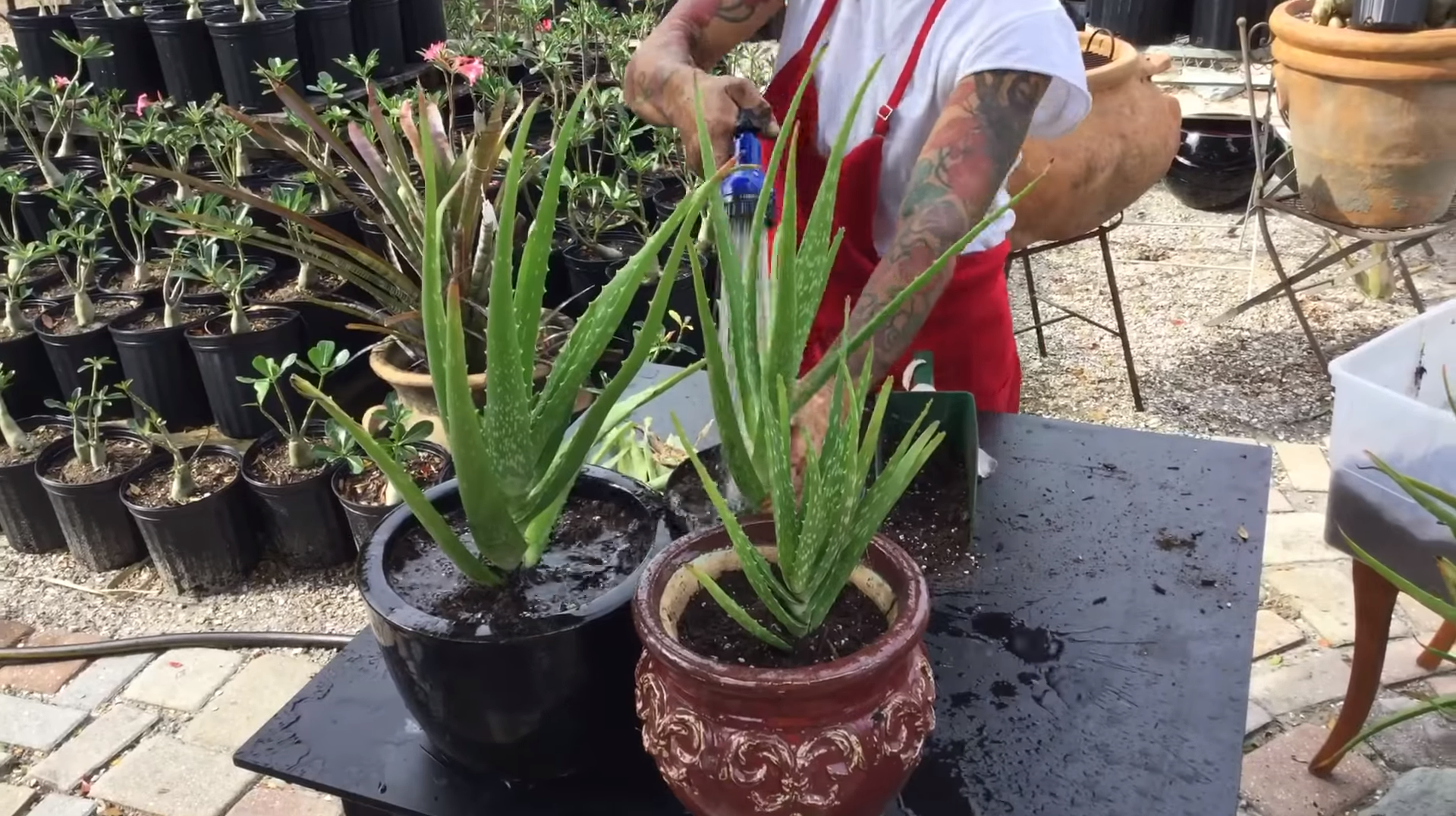
Caring for Outdoor Aloe Vera
Proper care of outdoor Aloe Vera extends beyond initial planting and involves routine maintenance to ensure healthy growth. Here are some tips and lifehacks for successful Aloe Vera care:
- Feeding Your Aloe Vera: Although Aloe vera plants do not require frequent nourishment, providing them with a balanced water-soluble fertilizer occasionally during their growth phase can promote their overall development. However, avoid over-fertilization as this can cause more harm than good.
- Pruning: Pruning helps to maintain the plant’s appearance and health. Remove any dead leaves at the base or those showing signs of damage or disease. Use a sharp, clean garden knife for this purpose.
- Winter Care: Aloe is a warmth-loving plant and can be sensitive to frost. In colder climates, consider covering the plants with frost cloths or moving them to a warmer location during harsh winter conditions.
- Pest Control: While Aloe Vera is relatively pest-resistant, keep an eye out for common pests such as aphids or scale insects. If you spot any, a gentle spray with a water hose or an application of insecticidal soap should keep them in check.
- Regular Inspection: Regularly inspect your plant for any signs of stress, disease, or pest infestation. Early detection of issues can prevent them from escalating and ensure the ongoing health of your plant.
Decorative Ideas for Home and Garden
- Outdoor Landscaping: Planted in rows or clusters, Aloe Vera can serve as an interesting focal point in your garden. Their unique structure and drought resistance make them perfect for xeriscaping and rock gardens. Pair them with other succulents or desert plants for an appealing contrast.
- Container Gardening: Aloe Vera plants thrive well in pots, making them ideal for patios, balconies, or indoor spaces. Choose decorative containers that complement your home’s aesthetic and place them in areas that receive plenty of sunlight.
- Terrariums and Miniature Gardens: Given their small size and slow growth, Aloe Vera plants can be a great addition to terrariums or miniature gardens. These mini-ecosystems can be a creative and living piece of art in your home.
- Indoor Decor: Place potted Aloe Vera plants on shelves, desks, or window sills as living decor. Not only do they add a touch of nature to your home, but they also serve as a handy source of Aloe gel for minor burns or skin irritations.
- Gifts: Small Aloe Vera plants make excellent gifts. They are easy to care for and their air-purifying properties make them a thoughtful gift for friends or loved ones.
In conclusion, Aloe Vera plants offer countless opportunities for creative, attractive, and beneficial use within the home and garden decor. Whether you choose to use them as a standalone feature or as part of a larger arrangement, they are sure to add a distinctive touch to your surroundings.
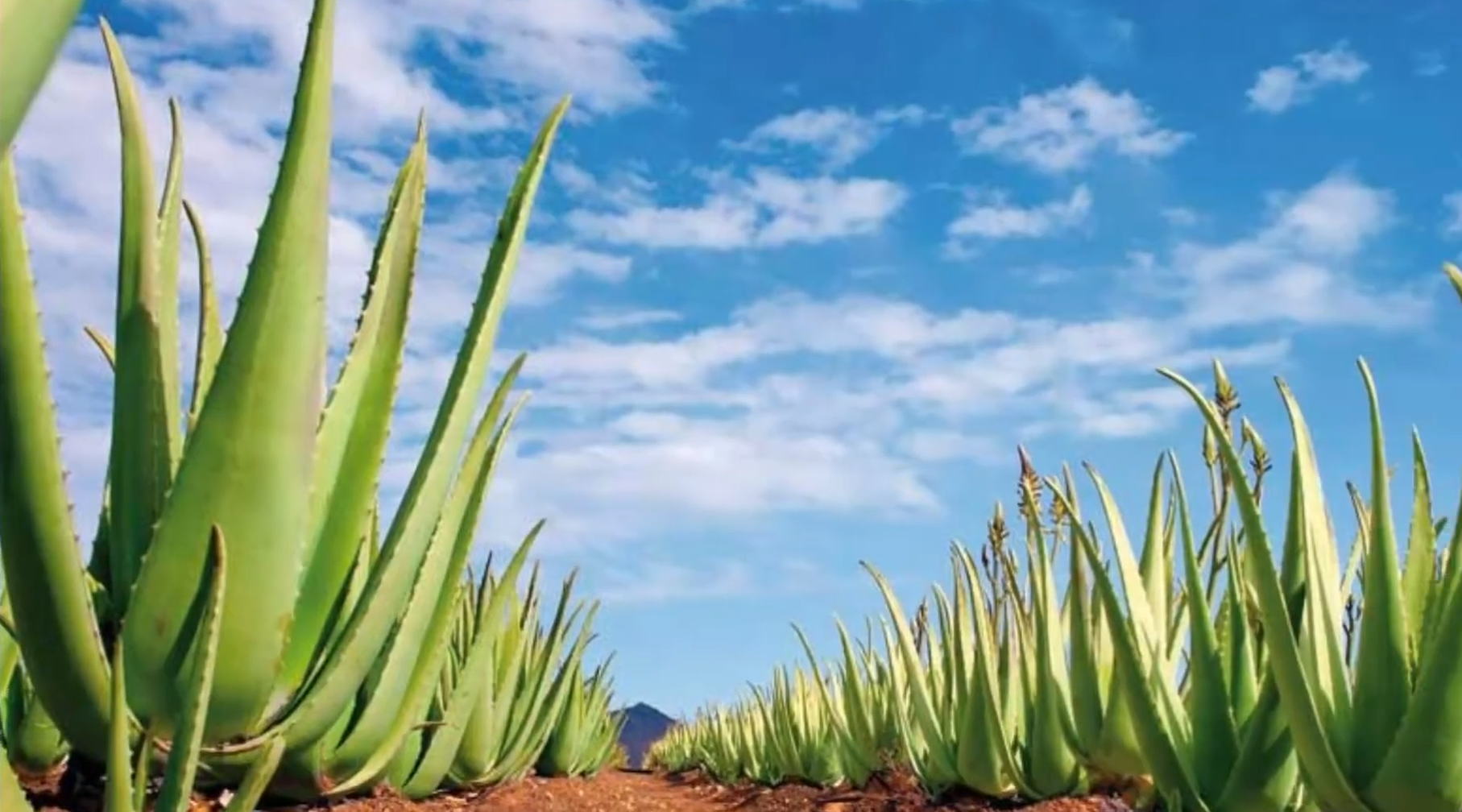
Frequently Asked Questions
Can I keep an aloe vera plant outside the house?
Yes, you can keep an Aloe Vera plant outside the house. In fact, Aloe Vera plants thrive in outdoor environments with plenty of sunlight. However, it’s important to note that Aloe Vera is a warm-weather plant and can be sensitive to frost. Therefore, in colder climates or during harsh winter conditions, it may be necessary to move the plant indoors or provide some form of protection against frost. Additionally, Aloe Vera plants planted outdoors need well-draining soil and should not be overwatered, as they are prone to root rot.
Does aloe vera need direct sunlight?
Aloe Vera plants do well in bright light, but they aren’t necessarily in need of direct sunlight. While they can withstand full sunlight, it’s not unusual for their leaves to turn brown in harsh or overly intense sunlight, especially during the hottest parts of the day. A location that receives filtered sunlight, like a bright window sill, is ideal for these plants. If the plant isn’t getting enough light, it may become leggy or stretched out.
Does aloe vera grow back after cutting?
Yes, Aloe Vera does grow back after cutting. When you cut a leaf from the Aloe Vera plant, new growth will continue from the remaining part of the leaf left on the plant. This is why it’s recommended to cut only the outermost leaves, allowing the younger, more central leaves to continue growing. Furthermore, the plant also produces offsets or “pups” around the base, which can be separated and replanted for more Aloe Vera plants. It’s a hardy and resilient plant that can regrow under the right conditions.
How long does aloe vera last outside?
Aloe Vera is a robust and durable plant that can last for many years outdoors, depending on the specific conditions it’s exposed to. In a favorable environment, an Aloe Vera plant can live and flourish for up to 5 to 25 years, or possibly even longer. Factors that influence its longevity include the amount of sunlight it receives, the quality of the soil, the frequency and quantity of watering, and the degree of care and attention it is given.
In terms of sunlight, while Aloe Vera plants do well in bright light, they can get sunburned if they’re exposed to intense, direct sunlight for too long, especially in the hotter parts of the day. The quality of the soil is also crucial – Aloe Vera plants require well-draining soil, as they are prone to root rot if the soil retains too much water. Overwatering is another common factor that can shorten the lifespan of the plant. Aloe Vera plants are desert plants that are used to dry conditions, so they don’t need to be watered very frequently. Lastly, routine maintenance like feeding, pruning, and pest control plays a significant role in the health and lifespan of the plant. With regular inspection and proper care, an outdoor Aloe Vera plant can be a beautiful and beneficial addition to your garden for many years.
Why not plant aloe vera at home?
While there are many benefits to growing an Aloe Vera plant at home, there could be a few reasons why some individuals might choose not to. One reason could be related to the climate and environment. As mentioned earlier, Aloe Vera is a warm-weather plant that thrives in sunlight and might not do well in colder climates or indoor spaces that don’t receive enough light. Another reason might be the presence of pets or small children. Aloe Vera plants are considered to be mildly toxic if ingested and can cause gastrointestinal discomfort in pets and humans, so they might not be a suitable choice for households where pets or small children might be tempted to chew on the leaves. Finally, some people might not have the time or inclination to provide the care and attention that Aloe Vera plants require to thrive, including regular watering (but not overwatering), occasional feeding, and protection from pests and disease.
Useful Video: Quick Guide To Growing Or Moving Aloe Outside
Conclusion
All things considered, Aloe Vera can bring a vibrant and alive character to any outdoor area, no matter if it is a patio in the city or a garden in the suburbs. Its diversity of uses will keep your household stocked with natural remedies for everyday needs and aesthetic preferences. Depending on the climate, Aloe Vera has the potential to sufficiently grow both inside and outside of homes, contributing its unique personality to adding color and life to an atmosphere. Why not research what type would be best for you? Make sure you equip yourself with all the necessary tools and knowledge that come along with caring for an Aloe Vera plant – you won’t regret it! Reap the benefits of adding this lovely plant as part of your home now!
References:
- https://herbalessencesarabia.com/en/ingredients/aloe-vera/
- https://www.picturethisai.com/care/Aloe_vera.html
- https://www.petalrepublic.com/best-soil-for-aloe-plants/





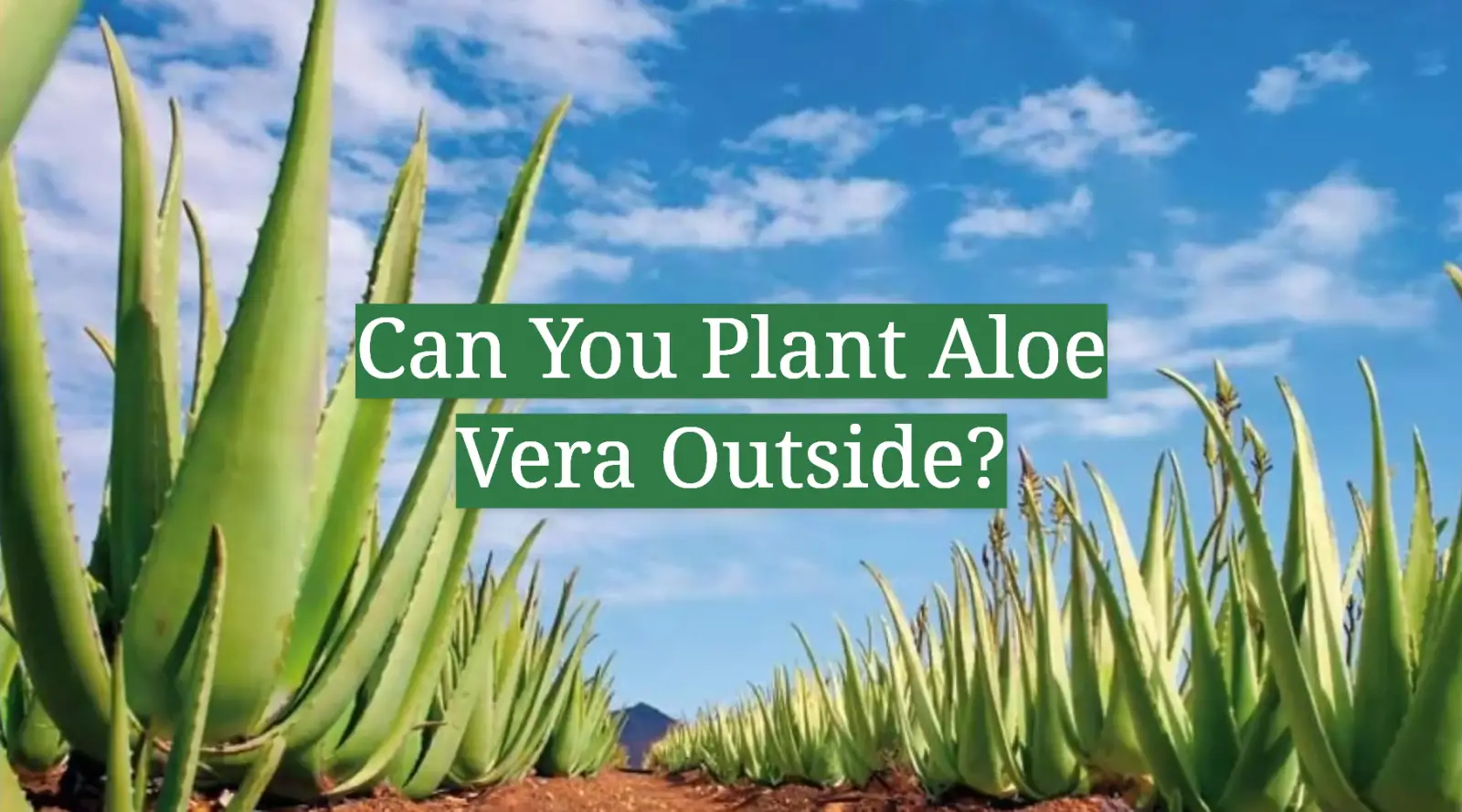
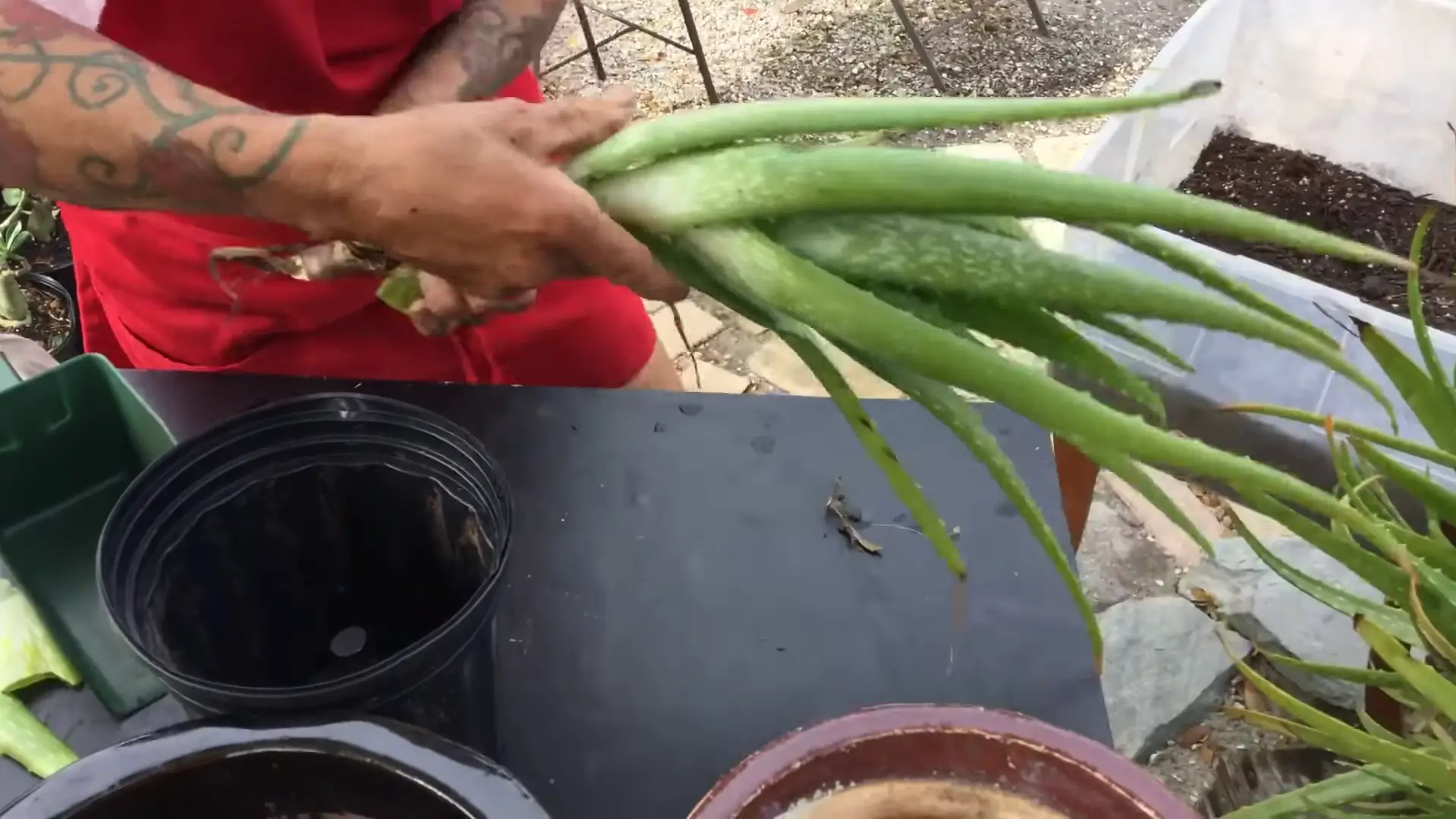





Leave a Reply
View Comments